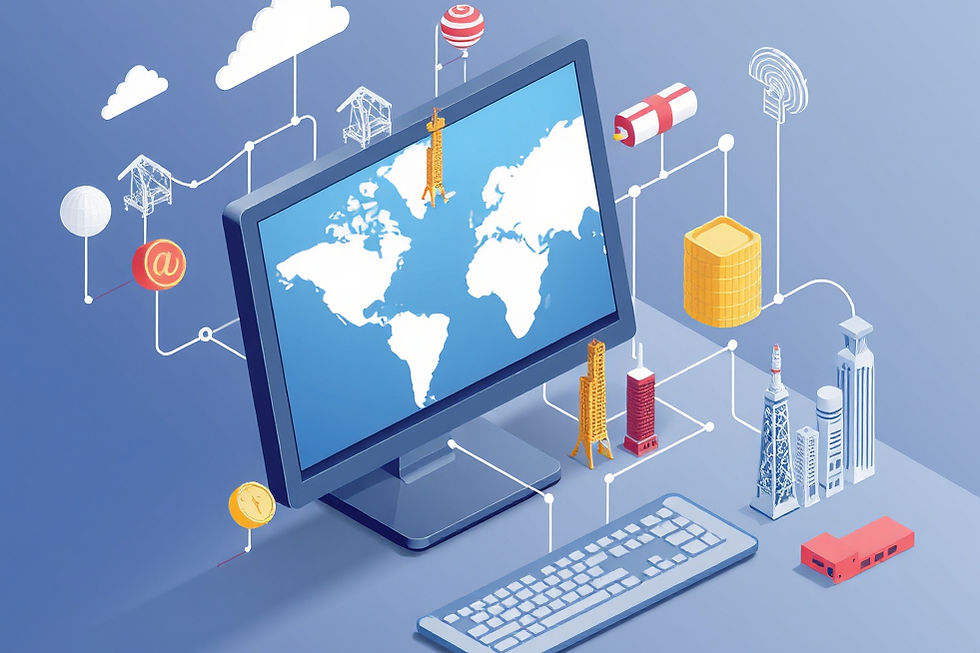Navigating Customer Experience Trends 2025: Balancing AI Personalization and Human Connection
- Client Strategy Team

- Aug 29
- 4 min read
As we move towards 2026, the landscape of customer experience (CX) is shifting faster than ever. Small businesses are facing the challenge of using new technologies while still keeping that warm, personal touch that customers cherish. This blog post peeks into the emerging trends that will shape how businesses engage with their clients, focusing on the blend of artificial intelligence (AI), the critical role of personalization, and the unyielding need for human connection in customer service.
The Rise of AI in Customer Experience
Artificial intelligence is transforming customer experience right now. AI is already deeply embedded in customer interactions, offering tools like chatbots that give instant answers and predictive analytics that foresee customer needs. For example, businesses using AI to personalize recommendations have seen an increase in sales by about 10 to 30%.
Still, the challenge is how to leverage AI without losing the personal touch. A recent survey found that 70% of customers said they would switch brands if they felt a company didn't care about them. Small businesses must find a way to use AI to enhance relationships without letting automation take over completely.
Moreover, statistics show that 75% of customers expect their interactions to be consistent across all channels. AI can help by making sure every customer touchpoint, from email to social media, feels connected and cohesive.
Personalization: The Key to Customer Loyalty
Customers now demand more, and personalization will be a game-changer for loyalty. By 2026, businesses that effectively use customer data to craft tailored experiences will gain an edge. Personalized marketing fosters loyalty, with studies showing that companies with strong personalization strategies can increase their revenue by up to 15%.
Personalization isn't just about using someone's name in communication; it's about knowing their past behaviors, preferences, and needs. For instance, a coffee shop could use customer data to send a special discount for a customer’s favorite drink on their birthday. This type of targeted promotion enhances the connection between the brand and the customer, leading to repeat business.
Voice of Customer Analytics: Listening to Your Customers
Capturing the voice of the customer (VoC) is essential for small businesses wanting to improve their customer experience. In 2026, VoC analytics will become more advanced, allowing businesses to gather and analyze feedback easily. For instance, businesses using VoC tools have been able to improve their customer satisfaction scores by over 20%.
By analyzing feedback from surveys, social media, and reviews, companies can spot trends and identify areas where they can improve their services. Predictive support powered by AI can help foresee customer problems before they arise. This proactive approach not only enhances the customer experience but also reduces the likelihood of negative feedback.
Future-Proofing Customer Service Teams
As customer expectations rise, customer service teams must evolve. Training will be crucial in equipping staff with both technical and soft skills. For example, businesses might prioritize training programs that highlight empathy, communication, and the effective use of AI tools.
Flexibility in work arrangements is another key consideration. Offering remote or hybrid work options can attract talent, and studies show that businesses with flexible work policies have 25% lower employee turnover.
By 2026, having a skilled and adaptable team will be essential for small businesses competing in the customer service landscape.
The Evolution of Remote and Hybrid Customer Service
The shift towards remote work, accelerated by the COVID-19 pandemic, continues to shape customer service strategies. Small businesses must be prepared to provide excellent service regardless of where their teams are located.
Investing in technology that supports communication and collaboration is vital. For example, using tools like video conferencing and team collaboration platforms can help maintain effective communication. A seamless workflow will enable customer service teams to deliver high standards of service, even while working remotely.
Creating a positive culture among remote employees will enhance team morale and, in turn, improve customer interactions. Engaged employees are happier and more productive, contributing to a better customer experience.
Generational Differences in Customer Expectations
As younger generations enter the market, their unique expectations are redefining customer service. By 2026, businesses must be tuned into these differences, especially with Gen Z, who values authenticity and quick responses. Research shows that 60% of Gen Z consumers will choose brands that reflect their values, particularly regarding sustainability and ethics.
On the other hand, Generation Alpha, the youngest group of consumers, will likely expect innovative and tech-savvy customer experiences. Small businesses need to adapt their strategies to meet the demands of these future consumers, potentially incorporating gamification or interactive experiences that engage younger audiences.
SK Frameworks is your Trend-Aware Partner
As small businesses navigate these evolving customer experience trends, partnering with experts like SK Frameworks can be invaluable. With a focus on emerging trends, SK Frameworks can assist businesses in integrating AI, enhancing personalization, and ensuring that human connection remains a priority.
Working with SK Frameworks can empower your business to stay ahead of the competition and craft effective customer experience strategies that promote growth and deepen customer loyalty.
Looking Ahead
As we approach 2026, the customer experience landscape will continue to change, driven by new technologies and shifting consumer expectations. Small businesses that strategically balance AI integration, personalization, and human connection will be the ones that thrive.
By using customer experience tools, listening closely to feedback, and preparing their teams for the future, small businesses can create remarkable experiences that inspire loyalty and achieve success. With the right approach, businesses can look forward to a promising future in customer experience.

By staying flexible and innovative, small businesses can not only overcome future challenges but also seize new opportunities in the world of customer experience. The journey towards exceptional service is ongoing, and those who prioritize connection will pave the way for success.




Comments